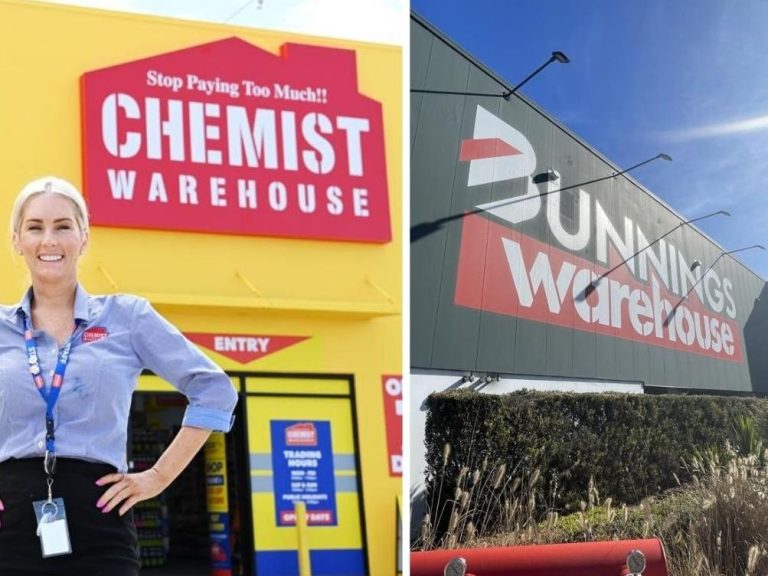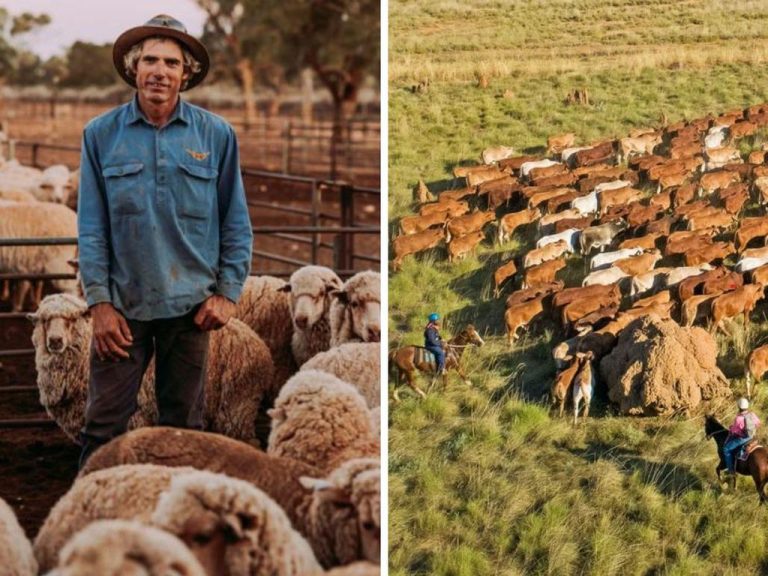The design duo behind the restaurants, bars you don’t want to leave
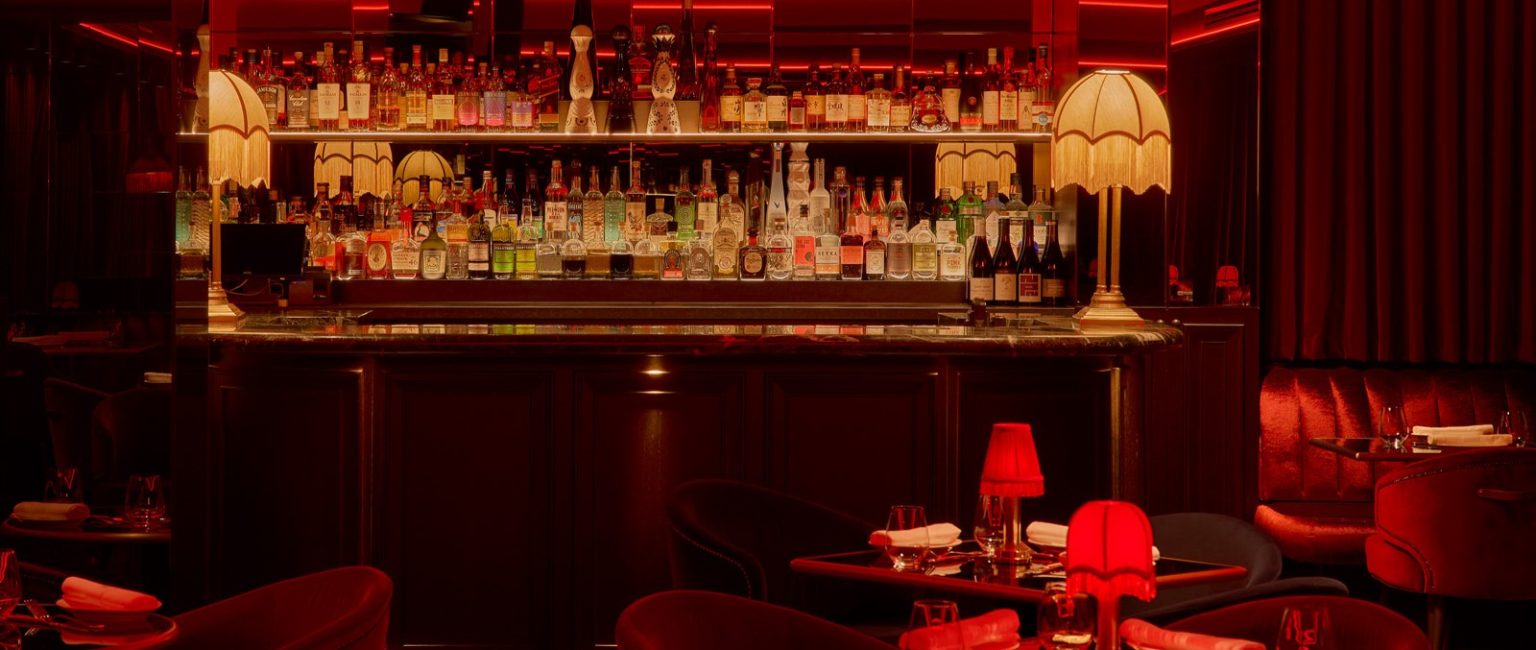
Melbourne-based interior design duo Hayley Mitchell and Samantha Eades are behind some of Melbourne and Sydney’s biggest hospitality drawcards and are changing the way we engage with hospitality using a multi-sensory brushstroke.
The duo has worked on French restaurant Maison Bâtard to Marmont at Crown Melbourne, and a new hotel Caption by Hyatt opening in Sydney later this year.
“In hospitality, great design isn’t just about creating something beautiful, it’s about crafting spaces that people want to stay in, return to, and talk about,” said Ms Mitchell, who started the business with her friend in 2020.
Their studio, Mitchell & Eades, now employs more than 40 people across their Melbourne and Dubai offices while juggling young families respectively.
“We believe the most successful venues engage every sense to tell a unique story, and generate revenue from multiple angles,” she said.
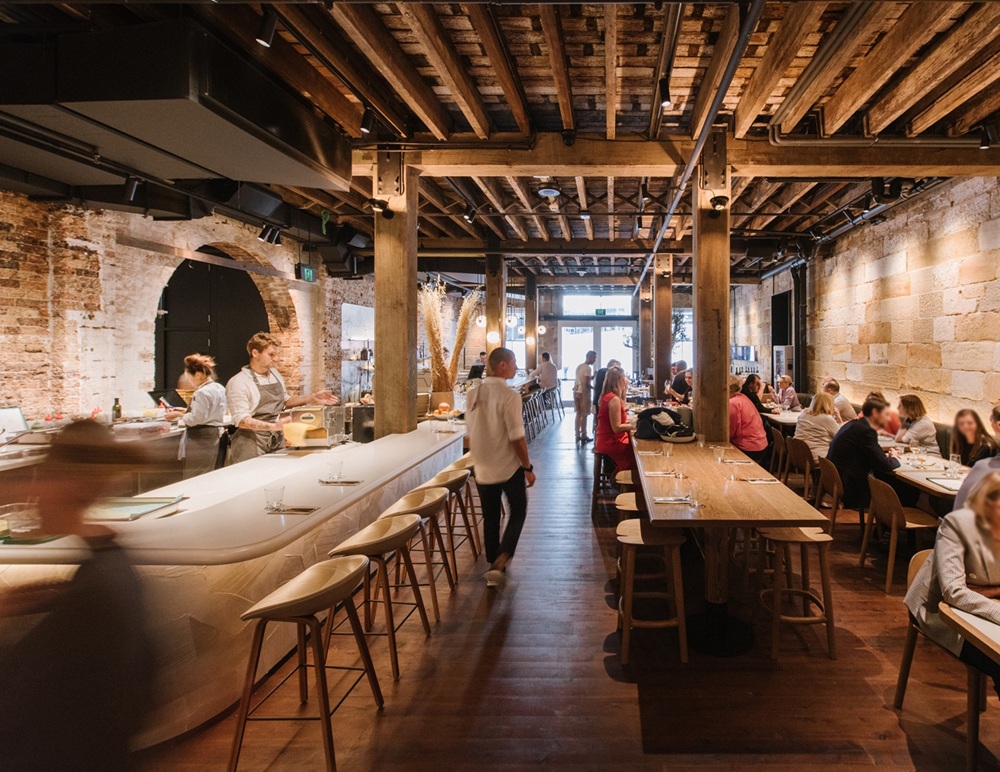
The duo applied the multi-level design approach to Hinchcliff House in Sydney. Picture: Jiwon Kim
Multi-level is the new ground floor
Keeping guests engaged from the morning to late at night is key when it comes to designing multi-level destinations.
According to Ms Mitchell, diners want the guess work taken out when they make a table booking, and if a venue can tick all the boxes the moment you walk in, they have no reason to leave.
Marmelo and Mr Mills in Melbourne – a Portuguese restaurant and with a lower ground bar, gives you a reason to stick around the next time you head to Hyde Melbourne Place on Russel Street in the CBD.
Carefully curated with tactile accents throughout – think clay finishes, natural timbers and industrial sized windows that hint at its heritage past – the space is warm and inviting, designed to feel familiar but keep you curious.
The basement bar Mr Mills is ideal for a pre-dinner booking or when you can linger longer after a meal and not quite ready to go home yet.
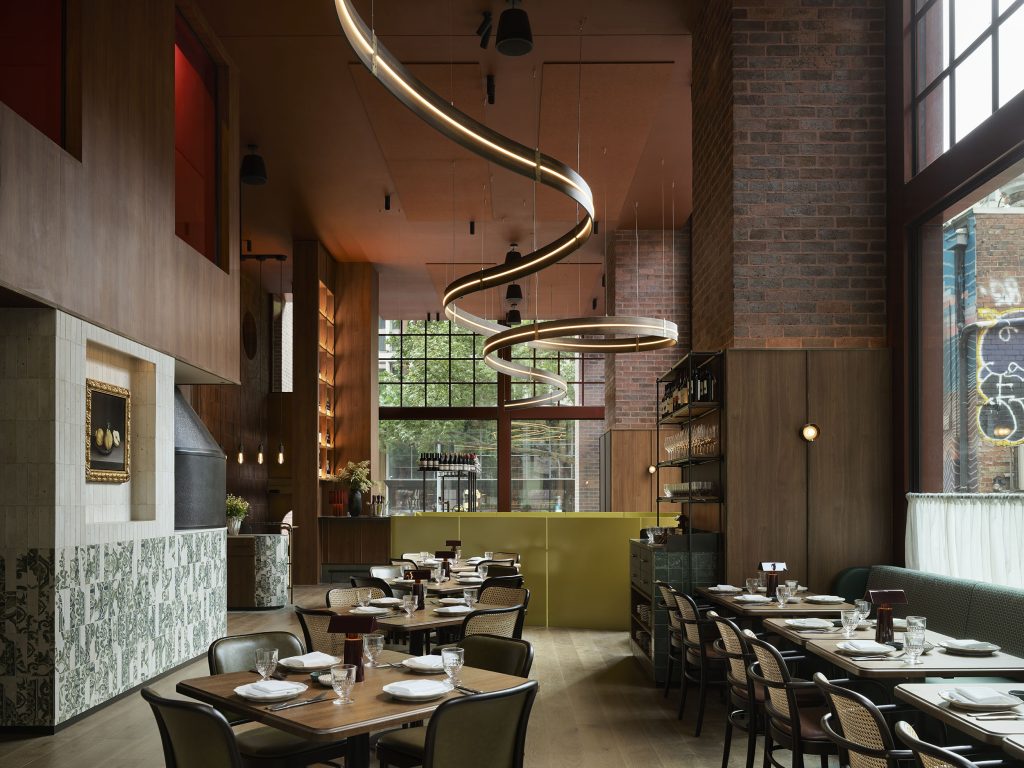
Marmelo is a Portuguese restaurant with a lower ground bar called Mr Mills in Melbourne. Picture: Supplied
The multi-level design approach is evident in all the work the women create – from Maison Bâtard and Hinchcliff House in Sydney – it’s done effortlessly and with experiential at its core.
“These are venues that evolve with the day, capturing breakfast crowds, long lunches, sunset cocktails, and late-night revelry,” Ms Mitchell said.
“Maison Bâtard has a rooftop carved between two heritage buildings that hums from morning coffee through to evening dining, before giving way to Le Club, a supper club that brings back the nostalgic “dinner and a show” tradition in the basement.
“We’re seeing this return to nostalgia across Australia’s hospitality scene; from white-glove service at Marmelo and Maison Bâtard, to carefully choreographed guest experiences that feel both glamorous and familiar.”
According to Ms Mitchell, it’s the melding of old glamour with vintage hospitality that’s accessible no matter what level you’re on.
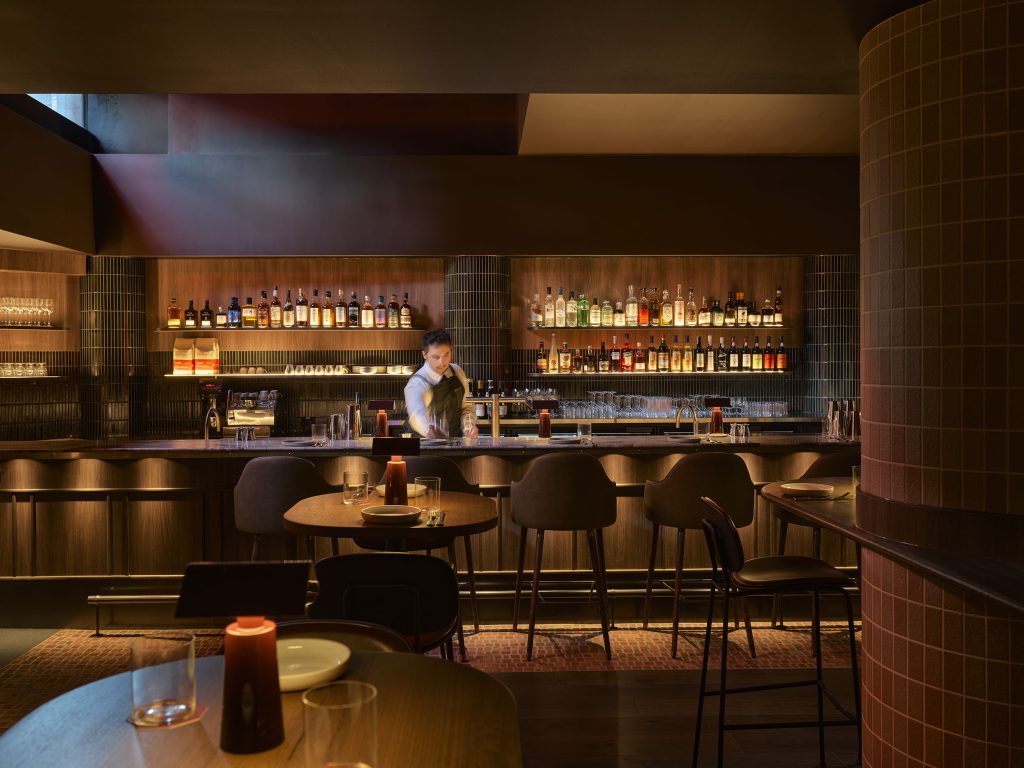
Mr Mills is the basement bar of Marmelo and is a popular spot in Melbourne. Picture: Supplied
Rooftop bars
Outdoor connectivity is another game-changer for hospitality design in Melbourne, where weather can be unpredictable.
While many rooftop bars are known for their grungy aesthetic, they have dialled up the glamour in South Yarra.
“Beverly Rooftop features a huge retractable glass roof, making it viable year-round,” Ms Mitchell said.
“Marmont at Crown boasts the largest guillotine sliding façade in Australia and one of the country’s largest bars; it’s positioned right at the edge of that opening to blur the boundary between inside and out.
“For us, aesthetic comes second to the soul of a venue. The soul emerges from layered, sensory design – think lighting, sound, texture, scent, temperature, and narrative all working together to create that elusive spark that keeps guests coming back.”
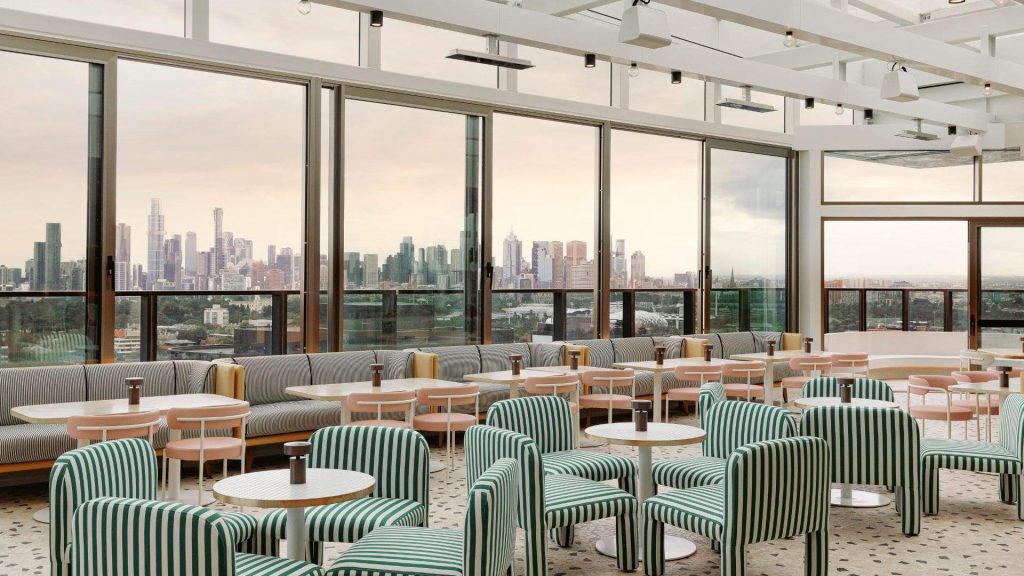
Beverly Rooftop features a huge retractable glass roof, making it viable year-round. Picture: Jake Roden
Whether you’re looking for a 360-degree view of Melbourne with a breezy modern interior at Beverley Rooftop or keen to bring that LA sunny disposition to the Yarra River waterfront at Marmont, Ms Mitchell said the rooftops and seamless exchange between indoor and outdoor seating is a huge drawcard in their design approach.
“We don’t look at design as an aesthetic thing,” she said.
“What we find interesting is that most people look at interior design and interior architecture as being about colours, finishes and making a space look pretty – which we do love doing, but that’s the last 20% of the job.
“For us, our success is about creating venues that stand the test of time and have their own story to tell. We are about creating a vibe and energy which is the most important thing with hospitality venues.”
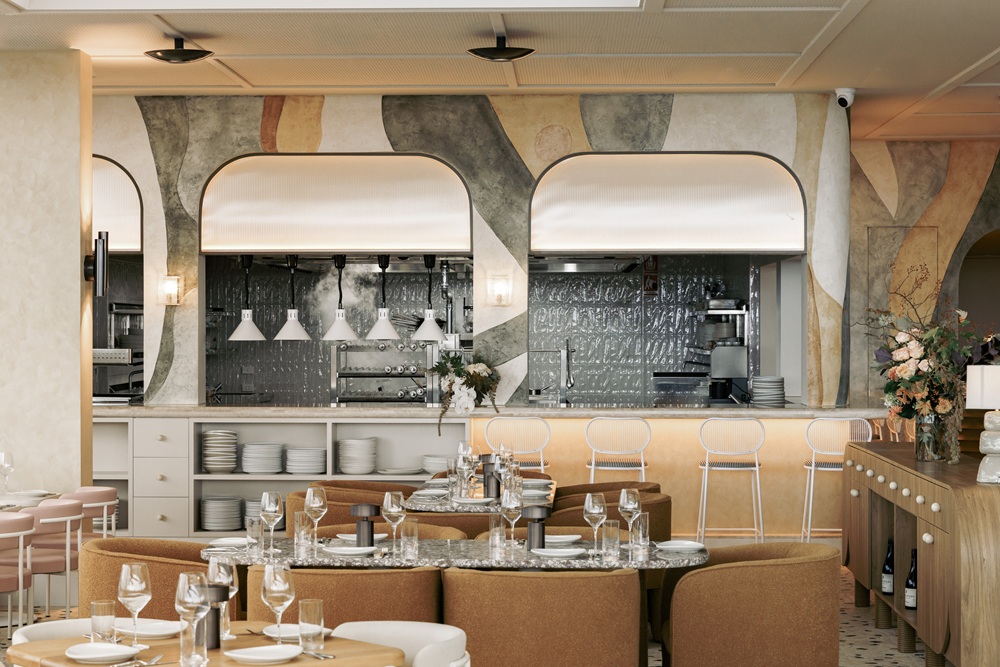
Beverly Rooftop is located near Chapel Street in South Yarra, Melbourne. Picture: Supplied
Checking in
Later this year, Mitchell & Eades will open Caption by Hyatt in Sydney – the narrative inspired by its Haymarket location and told through custom works by Chris Yee, a Chinese-Australian artist, and Samy Baby, a local tattoo artist.
This is part of Hyatt’s more affordable formats – a tier-down from a Hyatt-centric in price point, but ramped up with art and murals to engage a younger audience on the constant move.
“We’re also working on a Caption by Hyatt in Tokyo; with the main focus of these hotels being local art,” Ms Mitchell said.
“It’s young and fun and we have turned the design made by Chris Yee and Samy Baby into bathroom coverings and communal murals that you see throughout property.”

Maison Bâtard has a rooftop carved between two heritage buildings that hums from morning coffee through to evening dining. Picture: Lillie Thompson
Retaining heritage
Whether Ms Mitchell and Ms Eades are turning a 400-year-old fort in India into a wellness hotel [Six Senses Fort Barawa], or curating a restaurant for Australian comedy trio Sooshi Mango to bring a retro Nonna aesthetic to the table at Johnny’s Vince & Sam’s, they do so respectfully.
“Retained heritage is something we do a lot of – bringing in something new to an existing space, or in the case of Sooshi Mango’s restaurant, a backhanded way to retain heritage through decor and fittings that remind you of nonna,” Ms Mitchell said.
“It’s a fun way to tap into the past and reimagine it.”


